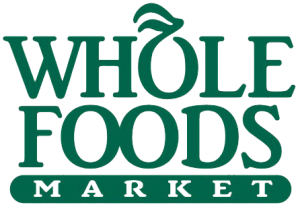
 Whole Foods (NASDAQ: WFM) is the second announced takeout of a top five Pender Value Fund holding last quarter (following the Panera deal – see our blog post). WFM is also a holding in the Pender US All Cap Equity and the Pender Strategic Growth & Income Funds. But unlike PNRA, we are pleased about this announcement.
Whole Foods (NASDAQ: WFM) is the second announced takeout of a top five Pender Value Fund holding last quarter (following the Panera deal – see our blog post). WFM is also a holding in the Pender US All Cap Equity and the Pender Strategic Growth & Income Funds. But unlike PNRA, we are pleased about this announcement.
WFM is a great company, but in our view, as an independent entity, it was no longer a compounder because its best growth days were in the rear view mirror. Nevertheless, we are always on the lookout to buy a cheap stock if we believe it can reach its fair value in a timely fashion and provide a reasonable return. WFM was an attractively priced stock because the company was going through some challenging times. Ultimately, we believed that either management would be able to fix the issues, or someone else would. That “someone else” is now Amazon.
The offer is slightly above the mid-point of our intrinsic value estimate range. The WFM discount has now been closed and the implied return over our holding period has been very attractive.
Amazon had been rumoured to have been kicking the tires on Whole Foods last fall, but decided not to move forward on a bid, perhaps because they felt the company wanted to remain independent. Since then, operating results have not materially improved and activist shareholders arrived in the picture who were openly supportive of a takeout to maximize shareholder value. Hence, a window opened for Amazon to be opportunistic when the Whole Foods management team set up a meeting to discuss strategic options. (A recent town hall meeting held by Whole Foods explaining how the deal came about it is worth a read here.)
This is the largest acquisition that Amazon has made in its history, more than 11 times larger than its next largest acquisition (#1 $13.7B for Whole Foods vs #2 $1.2B for Zappos). Amazon has a long history of experimenting and taking calculated risks. It first began beta testing a grocery delivery service in the US in 2007 (AmazonFresh). This resulted in a lot of important learnings and clearly this decade-long experience has given them enough confidence to make a major bet on the huge grocery sector – hence the Whole Foods announcement. The deal makes strategic sense because Whole Foods’ urban footprint has a very high degree of overlap with the AmazonFresh/Prime Now markets. The deal’s online-offline synergies and benefits to consumers also make this a sensible move for Amazon. Not surprisingly, the stocks of most other companies in the grocery sector have been under pressure as investors come to the grips with the new reality that Amazon is about to become a much larger threat to the entire grocery industry value chain.
This transaction is both a cautionary tale about the reliance on old models and a lesson about the emerging winner-takes-all-or-most digital economy. Better to own the disrupter than the disrupted (assuming the price of the disrupter is sensible). See Felix’ Commentary for Q1 2017 (Part 2) which delves further into this idea.



